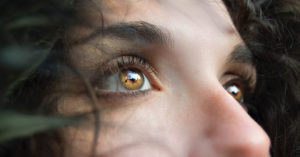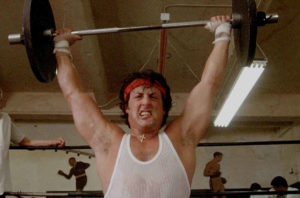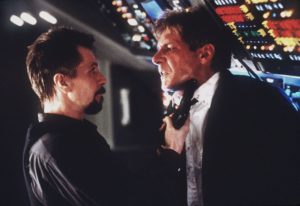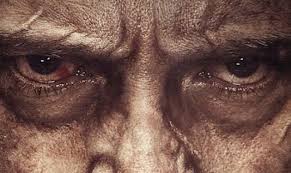Visualisation … Making it Really Effective
 In an earlier post I talked about how you could make your visualisations more effective by employing all your senses. It’s easy to think of visualisation as just ‘seeing’ the result or outcome that you want, but your brain needs more than that; it will only be seduced into going along with your wishes if you trick it by feeding it a varied diet of different sensory inputs.
In an earlier post I talked about how you could make your visualisations more effective by employing all your senses. It’s easy to think of visualisation as just ‘seeing’ the result or outcome that you want, but your brain needs more than that; it will only be seduced into going along with your wishes if you trick it by feeding it a varied diet of different sensory inputs.
The incredible power of the subconscious
The subconscious mind is incredibly powerful, but it doesn’t willingly bring all that power to bear unless it feels there is good reason to do so. You have to convince it that your desires are so real they’ve already been achieved!
But there’s another aspect to visualisation, and one that will make it a lot more effective if you add it to the mix. We’ve gone from merely seeing the result you desire to experiencing it via all your senses. Now, in order to further strengthen the visualisation, what you need to do is employ your emotions.
Emotional content brings a scene to life!
 You know from watching great movies that the scenes that stick in your mind, the ones that really get to you, are the ones that are doused in emotion. It’s one thing to tell a story, to show the characters doing the things that move the story along, but it’s another thing entirely to bring those scenes to life … and the way a great director does that is to stir your emotions.
You know from watching great movies that the scenes that stick in your mind, the ones that really get to you, are the ones that are doused in emotion. It’s one thing to tell a story, to show the characters doing the things that move the story along, but it’s another thing entirely to bring those scenes to life … and the way a great director does that is to stir your emotions.
Watch a training scene in Rocky and you’ll feel the energy, the drive, the enthusiasm of the challenger as he prepares to fight the established champion, Apollo Creed. It’s almost as though you’re training, and you can feel the buzz and the determination Rocky feels as he grits his teeth and battles through his gruelling training routines.
 In Air Force One you can see the President reduced from being the most powerful man in the world to a mere mortal, one man against many, struggling physically to save his own life and the lives of his family and staff. He’s fighting for survival, and it gets you emotionally, just like in Rocky, only this time you’re the President, and you’re all alone, fighting the bad guys, hand to hand.
In Air Force One you can see the President reduced from being the most powerful man in the world to a mere mortal, one man against many, struggling physically to save his own life and the lives of his family and staff. He’s fighting for survival, and it gets you emotionally, just like in Rocky, only this time you’re the President, and you’re all alone, fighting the bad guys, hand to hand.
Again, with expert direction, the scenes are constructed so that your emotions are heightened, and you actually feel as though you’re in the President’s position, struggling for survival and having to use your physical strength and your mental sharpness to outwit the enemy.
Copy the experts!
If you haven’t already found yourself doing it, it’s time to start watching movies a bit more critically. See how your emotions are being affected, and what methods are being used to make it happen. Listen for the way sound is used, sometimes to make you feel elated, sometimes to make you feel melancholy, sometimes horrified, or scared. And sometimes to make you feel so excited and alive that you just want the film to last forever!
 Notice how lighting affects your mood too. Watch how big close ups showing even the tiniest change in a facial expression can make you feel wary, or anxious, or involved, or joyful. Look for anything that makes you feel emotionally involved.
Notice how lighting affects your mood too. Watch how big close ups showing even the tiniest change in a facial expression can make you feel wary, or anxious, or involved, or joyful. Look for anything that makes you feel emotionally involved.
Make a mental note of these things and create a mental ‘swipe file’ of directorial techniques. You don’t have to describe them, or explain them, or pass some sort of exam by showing you’ve mastered them. Just be aware how these things work, how they affect you, and try to see how you could use these same techniques to influence yourself emotionally when you visualise. Think of Jaws without the menacing sound effects as the Great White approaches – it loses half its power!
Inject emotions!
Now, when you’re visualising, pump the scenes with emotion. Don’t make a big deal of it, or overdo it. Be like one of the great directors and do it with subtlety! Don’t just see yourself in a particular situation, imagine your facial expression, as in a big close up, and see the tiniest change, the type of thing that indicates high emotional involvement.
Do the same for others in the scenes you create. See them amazed, or gladdened, or supportive … and again, see even the slightest visual cues. Go for the big close ups, the ones that betray emotional involvement.
 See them congratulating you, or astonished by your achievements, or smiling with you and sharing those achievements with you. Bring in some subtle sounds, whether it be incidental music, music that stirs the emotions in some way, or even exaggerated sound effects. Notice how, in a movie, small sounds, such as footsteps scrunching on a gravel driveway, can make a scene come alive and make you feel like you’re actually there. Add (or amplify) those sounds, wherever appropriate, like a skilled foley artist, so that your scenes become ultra realistic and draw you right in.
See them congratulating you, or astonished by your achievements, or smiling with you and sharing those achievements with you. Bring in some subtle sounds, whether it be incidental music, music that stirs the emotions in some way, or even exaggerated sound effects. Notice how, in a movie, small sounds, such as footsteps scrunching on a gravel driveway, can make a scene come alive and make you feel like you’re actually there. Add (or amplify) those sounds, wherever appropriate, like a skilled foley artist, so that your scenes become ultra realistic and draw you right in.
Use the Photoshop layering technique
 If you’ve ever used Photoshop or any image enhancement software, you’ll know one of the most basic and important techniques is layering. As you build your scenes, layer one aspect atop another. You’ll be repeating your scenes every day anyway, so take the opportunity to keep adding new layers. Think of it as the sound is a different layer … and the lighting effects are another layer … and the tempo of the music another one … See the big close ups as yet another layer, and a very important one.
If you’ve ever used Photoshop or any image enhancement software, you’ll know one of the most basic and important techniques is layering. As you build your scenes, layer one aspect atop another. You’ll be repeating your scenes every day anyway, so take the opportunity to keep adding new layers. Think of it as the sound is a different layer … and the lighting effects are another layer … and the tempo of the music another one … See the big close ups as yet another layer, and a very important one.
Keep adding more layers, making your scenes come to life through the simple technique of layering.
You must’ve tried to watch a scene occasionally with the sound turned down, or off completely, just to see how much it changes the scene. The answer is … almost totally!
Once you take away that layer of sound, or music, or whatever, it changes the scene fundamentally. Don’t spare the time it takes in post production to make a scene really effective. Sometimes that’s what separates a great director from all the rest. He or she spends as long as necessary to build a scene, layer by layer, till it becomes emotionally powerful.
You’ll know when it’s working!
How will you know if you’re getting it right? Don’t worry, you’ll know! You’ll feel it … the same way you feel you’re right there, inside the scene when you’re watching a powerful scene in a movie. You’ll probably be totally unaware of the sound effects, the music, the lighting, or any of the other aspects that have been so painstakingly heightened to create the desired effect, but the effect will have taken place anyway.
And that’s all that matters. Use these filmic techniques to heighten the emotional involvement you feel in your constructed scenes and you’ll feel the difference almost immediately.
Once they’re used properly you might be barely aware of them, just the way it happens in an effective scene in a movie, but emotionally you will be drawn in more strongly and more deeply.
And the stronger and deeper your emotional involvement in your imagined scenes, the more your subconscious will accept them. Like a slack-jawed cinema goer it will watch with bated breath, and it will be drawn in, further and further. And once it’s hooked, it will accept your desired result as totally genuine, and that’s when it will start working automatically towards its realisation.
The result …
The result of taking this extra care in constructing your scenes is the same in your mind as it is in making a film – it makes it all the more believable and effective. Don’t be surprised if your desires start to quickly become attainable once you start to use these techniques. It just means your subconscious mind is watching carefully, and half the time missing its mouth when it’s trying to shove that popcorn in!
